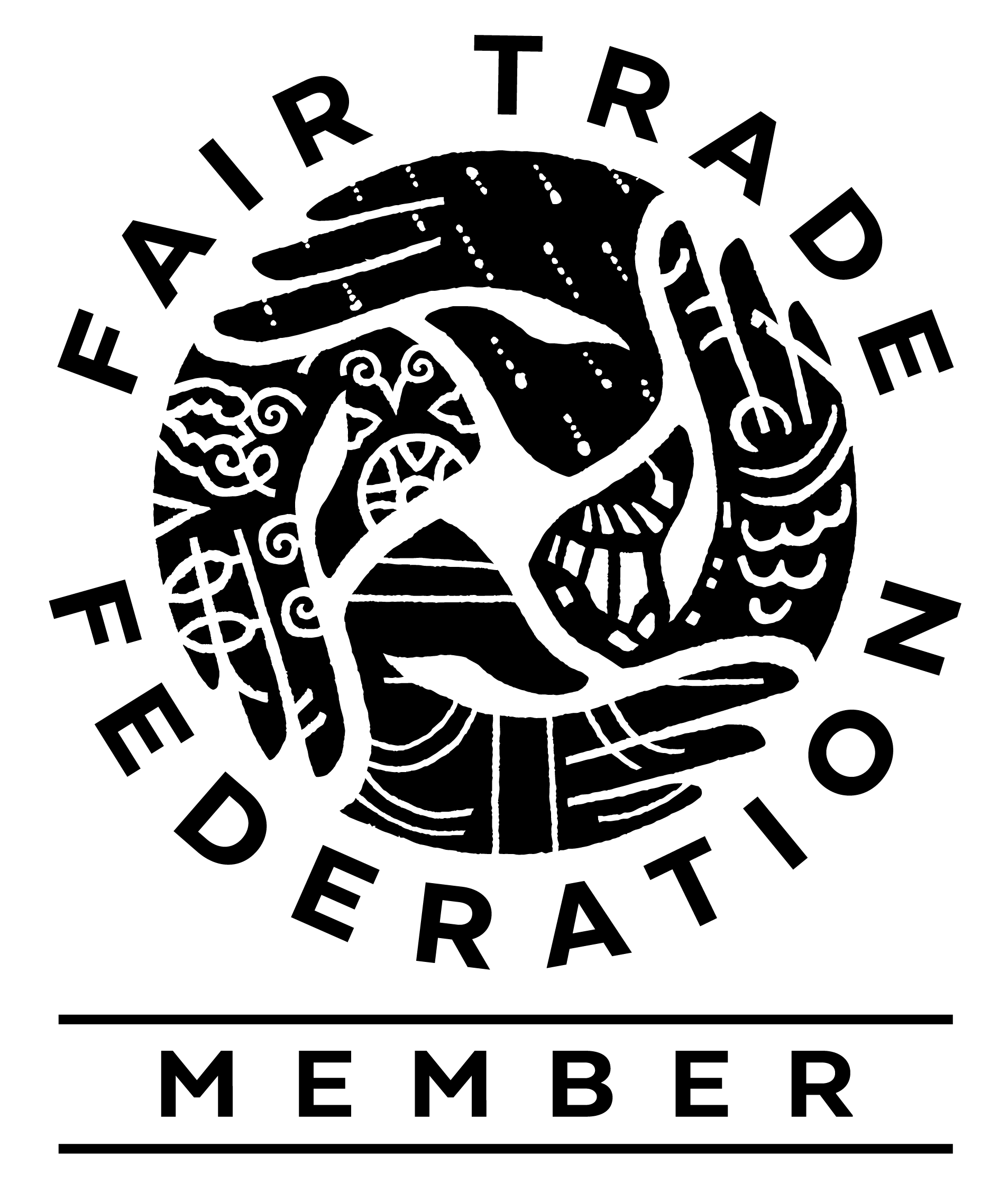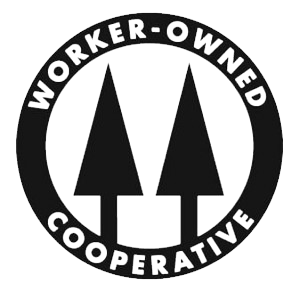The school year has just begun, your fundraising kickoff is coming up, and all the logistics are figured out. Now it’s time to start building some excitement! Putting up posters in the hallways, sending out emails to parents, and offering samples at Back to School Night are great places to start. But there is more that needs to be done to make sure that kids are excited to start selling and parents are excited to start buying!
Let’s start with the kids! How can you get your students excited to raise money over the fall season?

And now to the parents. As we all know, parents are busy people, and sometimes important things (even your catalog fundraiser!) can get lost in the shuffle. Here’s how to keep parents engaged and ready to support your cause. 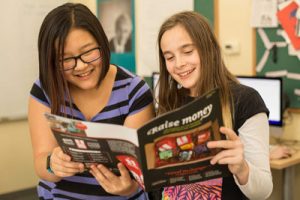
Interested in more ideas, or want to share your own? Email fundraising@equalexchange.coop or join our Facebook page for Equal Exchange Fundraising Coordinators! Good luck this fall!
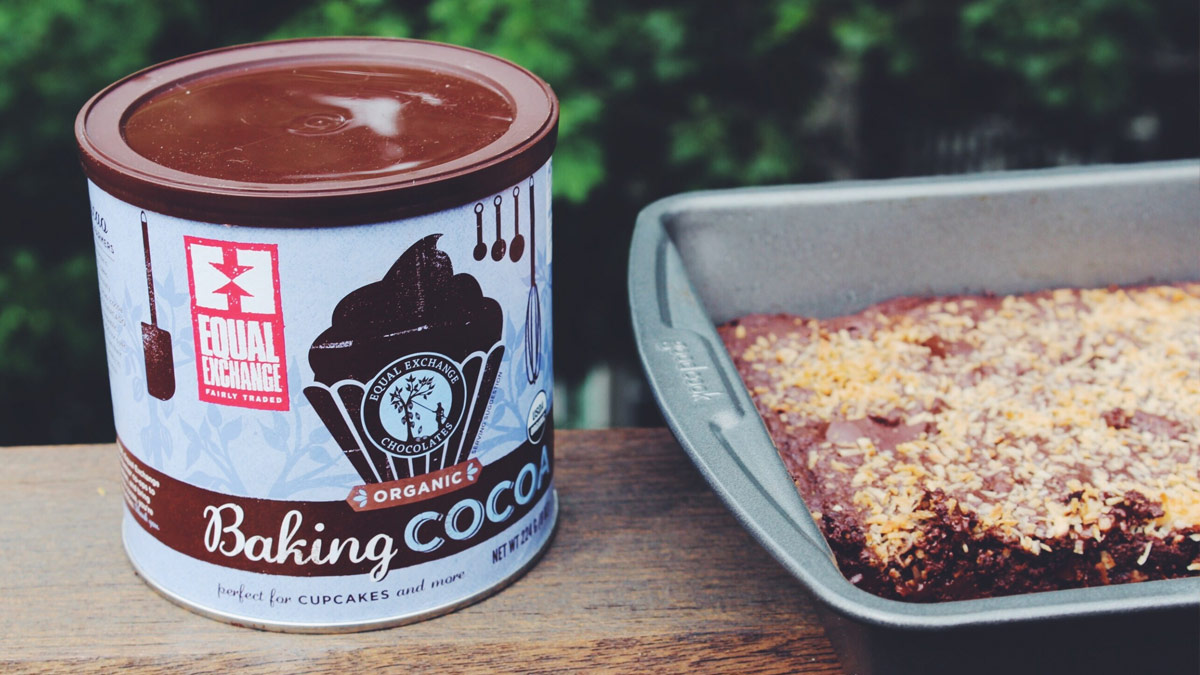
One of our favorite things about summertime is iced tea! It’s surprisingly easy to make by the glass or by the pitcher, and there are almost endless flavor combinations and creative recipes to try. One of the easiest ways to make a lot of iced tea at once is to brew a strong iced tea concentrate, which you then mix with water and ice as needed. Watch the video below to see how it’s done!
Simple Syrup
Sweeten your tea without the sugar crystals lingering at the bottom of your glass! Simply combine 1 part sugar with 1 part hot water just off the boil and mix well. Add to your glass or pitcher of tea to taste.
It’s bad enough that small coffee farmers get peanuts for their beans, and face natural and human disasters like unusual hurricanes or gang violence. The latest crisis to burden them is a fungus called coffee leaf rust, which causes blemishes on a coffee plants’ leaves, damaging the health and productivity of the plant, and in the worst cases killing it.
Over the past several years, coffee rust has reduced harvests in Central and South America by as much as 80%, destroying the livelihood of many small farmers who frequently lack the resources to control the damage.
There is general agreement among coffee experts that the spread of coffee rust is sped up by changing weather patterns: storms of greater intensity, unusually heavy rainfall, waves of intense heat, or prolonged dry spells.
Older and weaker trees are more likely to contract the fungus, and one solution is to remove the affected trees and plant new ones. However, many small farmers, already suffering from a drop in income, cannot survive the four years it takes a tree to produce its first saleable harvest. Shorter term natural solutions, involving soil enrichments, are also expensive.
Both Catholic Relief Services and Equal Exchange are deeply involved in collaborating with farmers to fight this plague and develop farmer resilience. And our farmer partners and international activists have agreed, to quote the report of the recent Coffee Rust Summit, that “long-term purchase commitments and viable pricing structure” are necessary from trading partners in order to combat this crisis.
As a fair trade buyer, Equal Exchange’s commitment is to the “viable pricing structure”. In 2015, this commitment included paying coffee farming communities a total of about $7 million over the market price for nearly 7.9 million pounds of coffee.
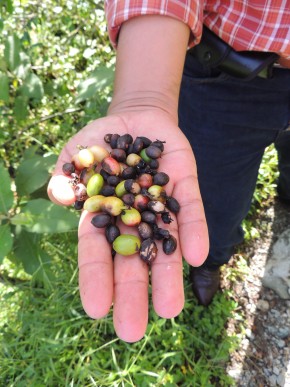
Our “long-term purchase commitments” also include broader collaboration with our trading partners, aimed at mitigating natural disasters—whether coffee rust, or hurricanes—and supporting economic progress. Such projects have included rebuilding a flooded road in El Salvador with funds from our church customers, facilitating farmer-to-farmer seminars on soil productivity in Central America, and training in coffee quality in the Congo, empowering farmer cooperatives to know the value of their coffee.
Over the last year, Equal Exchange has made special efforts in the fight against coffee leaf rust for several coffee farming communities in Mexico, El Salvador, and Peru. These co-ops have received more than $250,000 in investment through the Coffee Farmer Resilience Initiative, including over $100,000 from Equal Exchange. The investments have been used to replant more than a million coffee trees in the last year, and improve training, technology and productivity.
Catholic Relief Services (CRS) is the official international humanitarian agency of the Catholic community in the United States. Since 2003, CRS has conducted 20 projects in coffee communities, in 14 countries, committing over $47 million and involving over 50,000 smallholder families.
Along with its development projects, CRS is committed to combating the effects of climate change, specifically as it relates to the coffee leaf rust crisis. Typical of the communities CRS works with is Nuevo Eden in the department of San Marcos in Guatemala.
In addition, CRS is launching the CRS Coffee Program, “situated at the intersection of coffee and development” where a cash crop can enhance the prosperity of a farming village.
The Program envisions a world of prosperous smallholding coffee farmers; empowered coffee farmworkers; and coffee-lands where farming improves the environment, mitigates the impacts of climate change and delivers clean water to communities downstream.
The Program is a three-year, $4.5 million initiative which will place full-time expert staff in Central and East Africa, Central and South America and the United States, who will coordinate CRS’ coffee projects in those regions.
Please join us in bringing progress and prosperity out of the crises of climate change and disease. Visit Equal Exchange and CRS Fair Trade to find out how.
Coffee is the secret ingredient of many productive workplaces, and having it available at the office is a perk for everyone. But if you’re just getting started with a coffee setup, it can be hard to know what type of brewer is right for your office. Don’t feel overwhelmed by the sheer number of options out there! Here, we’ll break down the most common types of brewers so you can figure out what’s right for the size and general habits of your office.

One of the most popular options for small offices is the single serve brewer. Many people like them for the convenience of being able to brew just one cup of coffee at a time with minimal effort. There’s no waiting around for a full pot of coffee to brew, no leftover coffee wasted, and no one gets stuck with the hours-old last cup. If you have a lot of different coffee preferences in your office, the variety allowed by these machines is ideal — so fans of everything from decaf to dark roast can have what they want. Single serve machines are also designed to be user-friendly, both in their setup and day-to-day use. Convenience is key with these brewers!
The cons? Some folks feel that single serve machines sacrifice coffee quality, and others would rather not use disposable cups that these machines require. (We recommend a reusable filter as one alternative to single use cups!) If that sounds like your officemates, take a look at some other convenient or more customizable brewers.

Commercial-style brewers are ideal for larger offices that need to provide more people with their coffee fix at one time. Does everyone come into work at once and need to fill their mug to start the day? Better to have a full airpot or carafe ready to go, with 12 to 32 servings of coffee per container. Another popular type of commercial brewer gives you a range of customizable single-cup brewing options, and all you have to do is add whole coffee beans to the machine.
Before you jump in, consider that most commercial brewers will require a hookup to a water source, plus professional installation and maintenance. Commercial brewers are built to withstand daily use and producing a large volume of coffee consistently, and as such are usually more expensive than home or smaller capacity brewers. While this will cost you more up front, it could save you the cost of replacing a less durable machine multiple times. If you have a busy, larger office, this could be a good investment.

Is coffee quality and customization paramount for you and your coworkers? Are you concerned about disposable single serve cups but only want one cup at a time? Manual brew methods may be the way to go. Manual brewers, like the Clever, Melitta, Chemex and French press, are best for single or small group servings. These methods take a little more time and effort but allow for maximum customization and individual preferences. You’ll need a place to boil water and a kettle, plus the brewing equipment itself — possibly multiples if folks will want to be brewing at the same time. Overall, this is the most complicated method for in-office brewing, but with a little practice, everyone will be able to make an outstanding cup of coffee to their liking whenever they want it.

When it comes to combining convenience with coffee quality, many offices opt for a more traditional-style coffeemaker in which you easily add coffee grounds and water to brew anywhere from 2 to 14 cups of coffee. The complexity and quality of these machines vary, so you’ll want to consider your budget and the needs of the people in your office when you’re shopping around. How much coffee will you need at one time? Six cups? Ten? How often will you be brewing? Many lower-cost coffee pots are designed for home use and may not withstand the demands of caffeine-hungry office workers, which could lead to breakage and ultimately spending more on a replacement. If you think your coffee maker will see a lot of traffic, opt for more of an investment piece that can withstand heavy use or has a good warranty. If you and your officemates only drink a coffee pot’s worth once per day, a typical home brewer could work for you. We recommend this selection of top-rated coffee brewers approved by the Specialty Coffee Association of America.
Whatever brewer you choose, make sure to shop carefully for the right kind of coffee — like organic, fairly traded coffee from small farmer co-ops. After all, that’s the most important part!
(And if you’re buying whole bean, don’t forget a coffee grinder!)
Welcome to the last step of your school fundraiser! You’ve placed your master order, received your products and now: it’s time to pack and distribute orders to students. This may sound daunting, but it doesn’t have to be! Why not make it fun? Reserve a space, invite volunteers and bring your packing party supplies. Watch this short video to see how to efficiently set up your packing space, pack your orders in an organized way and get it all done while having fun. You’ll be glad you did!
Guest post by Mary O’Brien, Global Solidarity Leader, Archdiocese of Hartford, CT
“Each year as I look ahead to the Easter Season celebrated in my Catholic faith tradition, I anticipate the Emmaus Scripture Reading. The two disciples, traveling on the road to Emmaus are joined by the risen Jesus, but do not recognize him until he breaks bread with them. For me, the Emmaus reading so relates to how I want to live… to encounter and to be in relationship and solidarity, and yes, it even relates to Fair Trade. In his recent blog posting Peter Buck spoke about the principles of Catholic Social Teaching and Fair Trade. I will add that these principles, especially that of Solidarity, have had a significant impact on how I live and express my faith today.
In the summer of 2012, I had the privilege of joining Peter and an Equal Exchange delegation to El Salvador, where, among other experiences, we lived for several days with families at Las Colinas Coffee Cooperative. It was a profound experience I will never forget. It was at Las Colinas that I came to understand and embrace the true meaning of Solidarity, and specifically that of Global Solidarity. Delegations, such as this one to Las Colinas, are often called Mission Trips, which for many promote the idea of going somewhere to work or to help. I smile even as I am writing for this blog when I remember that yes, I did some work while there, but I was of no help to Mr. Sanchez, who taught another delegate and me how to plant coffee tree seedlings. On a normal day, working alone, Mr. Sanchez would easily plant 200 seedlings. The work included sifting through dirt and sorting out insects and worms that could be fed to the ducks, from those that could not, such as the scorpion that I uncovered! So that day, with the assistance of the two of us, we managed to plant 50 seedlings! It was that day also, when I realized that my work would begin a soon as I arrived back home in Connecticut.
Then, in 2014 I became a Catholic Relief Services Fair Trade Ambassador for the archdiocese of Hartford, Connecticut where I live. Friends and colleagues are tired of hearing me say that it is so important to understand the reciprocal nature of Fair Trade and of Solidarity. When we support Fair Trade we must realize that we are receiving as much as we are giving.
When I purchase Fair Trade coffee, for example, not only am I supporting the livelihoods of the farmers at Las Colinas and other Cooperatives, but I am also receiving a delicious cup of coffee, that I can so enjoy as I read the morning paper. While I’m enjoying it, I can reflect on all the steps of processing, shipping and roasting that brought this coffee to my table. Not only am I experiencing solidarity with these coffee farmer and their families, I am also being given the privilege of living the message of the Gospel. And if I want to take this one step further, and go out in my own, and surrounding communities to promote Fair Trade, the possibilities for building the spirit of solidarity are endless.”

Adapted from Taste of Home

Adapted from Taste of Home
Peter Buck is a Senior Representative of the Interfaith & Community Sales program at Equal Exchange. This blog post is part of an ongoing series of reflections on the relationship between Fair Trade and Catholic teachings.

Pope Francis’ trip to Mexico, and particularly his visit to the state of Chiapas, reminded me of one of my visits there, when I saw how God transmits social teaching to His people.
Formal Catholic Social Teaching is defined by a set of Papal documents, starting with Pope Leo XIII’s 1891 encyclical on the condition of the working class, Rerum Novarum. Ultimately, however, it originates in how God speaks to us in scripture. On a trip to Mexico, I saw how God transmits social teaching to a group of His people there.
In 2008, I led a delegation of our church customers to visit coffee farmers in the Mexican state of Chiapas. We were guests in the village of La Ceiba, and on our first night we were surprised to be greeted with a brass band, speeches of welcome, and a Catholic liturgy led by a local deacon.
The reading was from the book of the prophet Amos. In the eighth chapter Amos delivers God’s warning to those who act unjustly toward the poor, in this case unscrupulous grain merchants in ancient Palestine:
For the farmers of La Ceiba this reading isn’t symbolic, it’s a precise description of how they have been cheated for generations.
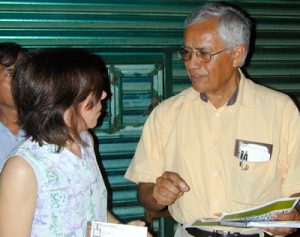
Before they formed a cooperative, the farmers had only one buyer for their coffee beans—the same plantation owner whose land they used to till as debt peons. At harvest, if they took a 60 kilogram bag of coffee to the buyer, it would only weigh 55 kilograms on the buyer’s “fraudulently-tampered” scale; on top of that, the buyer would offer a low price, “buying up the weak for silver.”
With the help of their Bishop these farmers formed the CIRSA cooperative and ultimately found Fair Trade buyers like Equal Exchange who would weigh their coffee honestly and pay an adequate, stable price. The farmers of La Ceiba were happy to welcome us with a brass band, speeches and some instruction in Catholic Social Teaching.


